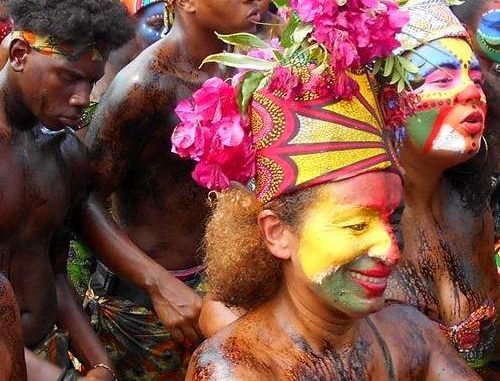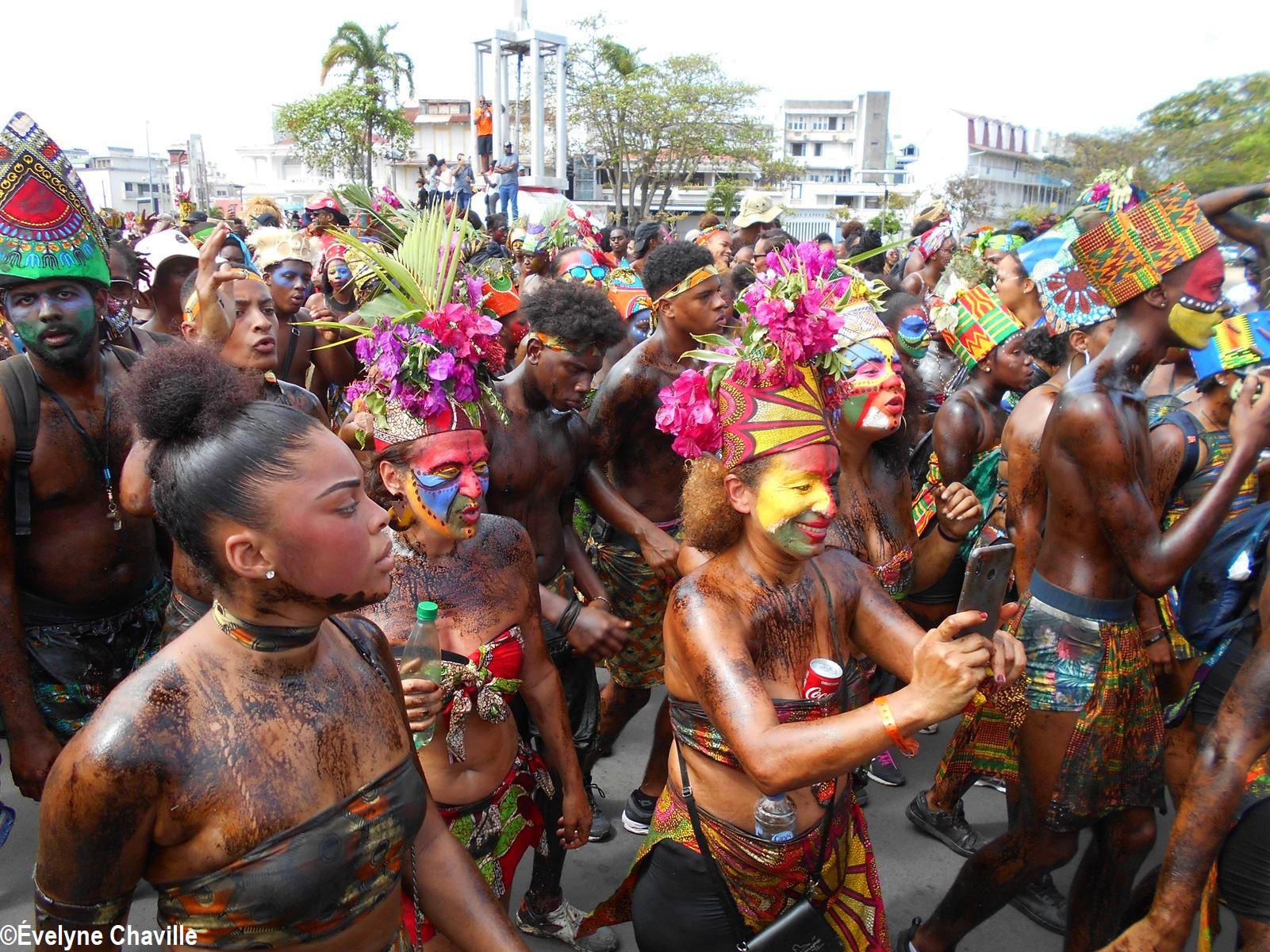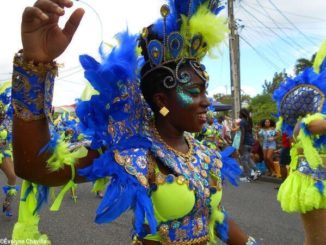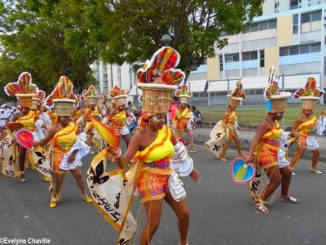
59 is the number of parades that we counted in the Guadeloupe carnival program. This number is certainly higher because not all the schools or associations have communicated us the events they planned during this carnival period.
Gone are the days when carnival took place in two poles : Basse-Terre, the “administrative capital” and Pointe-à-Pitre, the “economic capital”. We can also add the small town of Vieux-Fort which has been organizing its carnival for more than 150 years according to very specific rules left by the elders, notably the obligation to remove their famous mask before sunset…
Over the past two decades, the carnival festivities have started to be decentralized. Then, gradually, what was exceptional became usual, normal and now obligatory.
This year, 23 towns and municipalities (out of 32) are involved in these festivities : Pointe-à-Pitre, Les Abymes, Basse-Terre, Le Gosier, Capesterre Belle-Eau, Trois-Rivières, Pointe-Noire, Sainte-Rose, Baie-Mahault, Le Moule, Sainte-Anne, Goyave, Le Lamentin, Petit-Bourg, Deshaies, Vieux-Fort, Bouillante, Saint-François, Grand-Bourg, Saint-Louis ; Baillif, Gourbeyre, and Saint-Claude being points of departure or arrival for “déboulés”.
59 official parades, it’s a lot compared to the other Caribbean islands which celebrate like Guadeloupe carnival before Lent and it’s also a lot compared to the other Caribbean islands which chose to organize their carnival for other dates on the calendar.
Even the Trinidad and Tobago carnival, which is considered the first carnival in the Caribbean and whose slogan is “The Mother of All Carnivals” – we assumes that it is the Caribbean carnivals and not that of Brazil! – does not have this high number of parades. In fact, the Trinidadian carnival is composed of several contests, the parades starting only two or three days before Fat Days. In total, we count eight parades on the official 2023 carnival program.
How can we explain this profusion of parades or “deboulés” that make up the Guadeloupean carnival schedule? Let’s recall that the parades start on January 1 and last until Ash Wednesday. Are we a very proud people who like to show off, to parade? Are we a people who like to make demands by taking to the streets to make our voices heard? Can the political status of the archipelago (non-independent Caribbean archipelago, populated by a majority of descendants of African slaves; French territory) explain this need for expression on the macadam?
What is certain is that over the last thirty years, important carnival bands have emerged in the municipalities and they want to parade at home. In addition, the elected officials of the cities, towns and now urban communities also want to benefit from the fame of these bands when they pay them a grant or make available to them a room and means of transport…
Carnival is often compared to an outlet to support the annoyances of life and it is also the most popular cultural event in Guadeloupe.
In any case, it is necessary to find the money to present a costume each week and fortunately the outfits from previous years are reused. For love, the revelers invest their own money and go into debt to offer a free show. But, how long will the bands – especially the “snare bands” – remain outside the “system” when others profit from the Guadeloupe carnival ?
In conclusion, in a few years our carnival will probably have to make some changes. Indeed, Guadeloupe, which is undergoing a massive exodus of young people, is announced as one of the oldest French regions. It is clear that our revelers, who are getting older and older (especially in the “skin groups”), will no longer be able to walk several kilometres for several consecutive weeks even with the best pair of sneakers. Will the bands that survive this change be forced to pay the few young people in the country to parade every weekend and on Fat Days?




